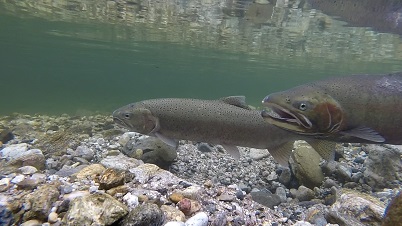California Monitoring Plan (CMP)
 Adult Steelhead in the Big Sur River (CDFW photo by Matt Michie)
Adult Steelhead in the Big Sur River (CDFW photo by Matt Michie)
The California (Coastal) Monitoring Plan is designed to inform salmon and steelhead recovery, conservation, and management activities. The California Department of Fish and Wildlife and NOAA Fisheries are leading the implementation of this Plan in watersheds from California’s border with Mexico north to the Oregon border, including San Francisco and Humboldt Bay tributaries.
Current activities include
- Developing a population monitoring database
- Establishing the sampling framework
- Research and refinement of field methods
- Implementation of salmonid monitoring projects
- Communicating with stakeholders and building partnerships
In May 2021 CDFW and NOAA Fisheries led a five session virtual workshop to explore lessons learned from CMP implementation and identify next steps and updates to methodologies to make the program more effective, efficient, flexible, and adaptive. This culminated in the publishing of a Workshop Proceedings California Monitoring Program Workshop Series (PDF) document.
Guidance Documents
The framework for the CMP in in Northern and Southern California is provided in two guidance documents:
For more information about CMP, contact our CMP Coordinator.
CMP Coordinator
CDFW Fisheries Branch